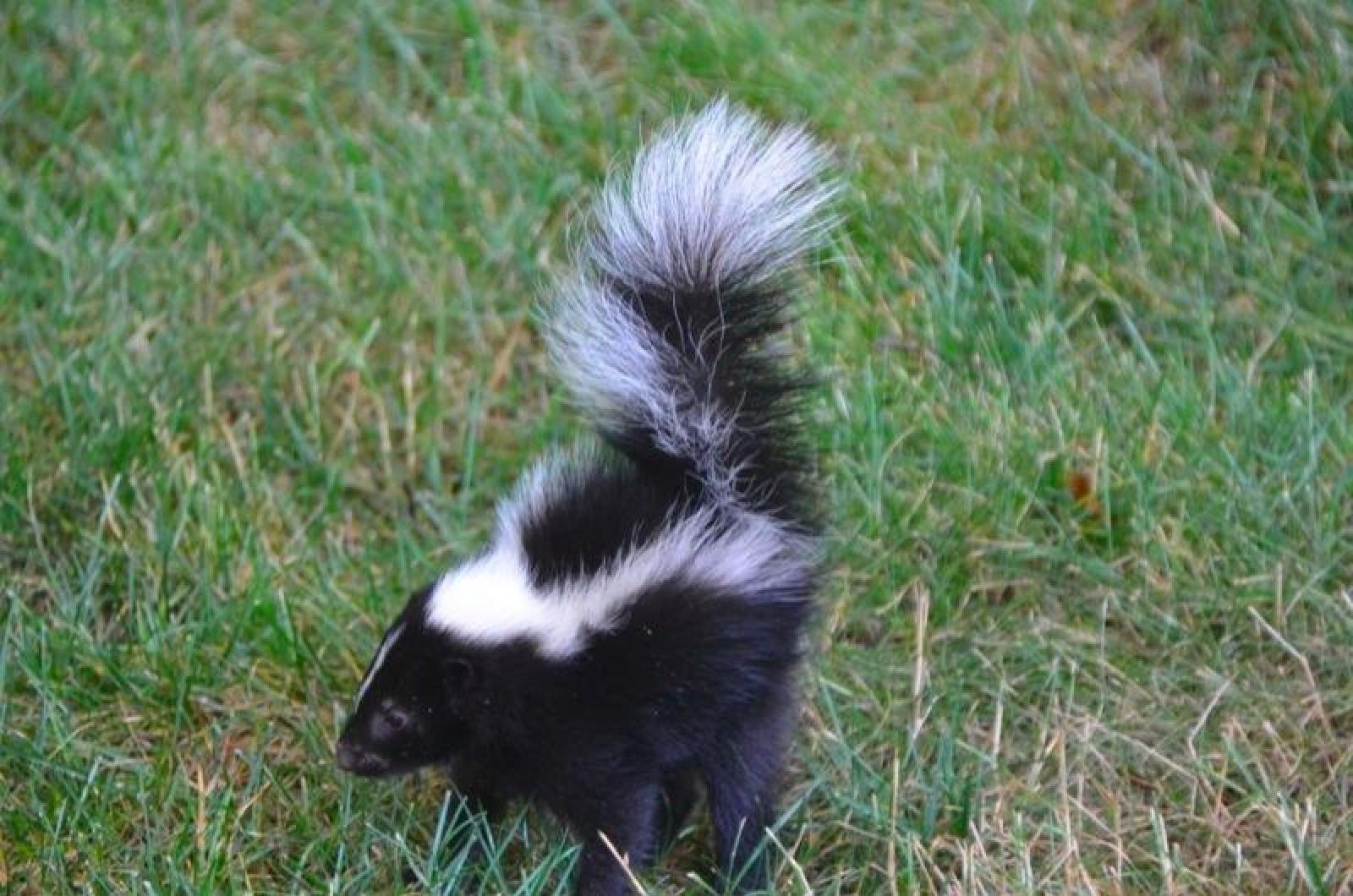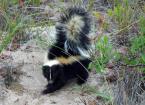One of the early signs of the coming spring is here, and it stinks. The smell is familiar and emanates from roadsides, beneath decks and perhaps even from your dog. And it is all of a sudden everywhere. Skunk musk tells us that these black and white mammals are out and about.
No descriptions are needed to identify these common Island denizens. While they are abundant here on the Vineyard, Nantucket and the Elizabeth Islands remain skunk free. And while we think of Pepé Le Pew as a French skunk, skunks are not found in Europe either.
Skunks are not true hibernators. Instead, they sleep though winter in their dens, three to four feet below ground in long round tunnels, which end in a chamber lined with leaves and grass. Small groups of three to four skunks remain together in these dens. During warm spells of winter, skunks emerge and leave their dens to find food.
February and March, however, mark their seasonal emergence. They have one thing on their mind when they come out, and that is finding another skunk.
Male skunks are polygamous, meaning they have more than one mate. Sometimes he has to travel to find her. While female skunks have a typical range of only a mile, males may roam up to five miles to find their striped spouse. After mating, males will go on walkabout, taking no part in raising the young. Female skunks gestate their young for 62 to 68 days, and up to eight kits are born in late April through early June. So skunk love is in the air, as is the pungent source of their reputation. A skunk’s notoriety is derived from its ability to spray its enemy.
Preferring not to squirt, skunks will only spray under duress. Their body language and position tells you if you are in imminent danger. Face to face is always better with a skunk, since its scent glands are found on its backside. Look for the telltale signs of a skunk ready to spray: arching of its back, tail raised, stomping its feet, and its posterior end facing you. Backing away slowly will usually work; though try to tell that to your overeager pup.
At some point, most of us will be targeted. Some will get missed, and some will get misted. Skunk musk is an oily yellow substance that emanates from two scent glands below the animal’s tail. Each skunk can hold three teaspoons of musk, enough for five or six sprays, and can replenish the musk at a rate of two teaspoons a week. When released, musk travels far and wide, and is known to spurt more than 10 feet from the spraying animal.
If you, your pets or your furniture finds themselves doused with skunk musk, there is a cleaning concoction that might help. The most commonly suggested remedy is tomato juice, but it is not effective, since it will only mask the skunky smell.
A mix of one quart of hydrogen peroxide (3 per cent), ¼ cup baking soda, and a teaspoon of dish detergent will do the trick. For those who wish to avoid the bleach in the hydrogen peroxide, white vinegar is an acceptable substitute. Wash yourself or your pet down with this solution. Don’t make extra for next time, as it shouldn’t be saved — pressure from oxygen gas buildup could blow off the top of the container. Better to make it fresh every time it is needed.
While most folks disdain this scent of spring, there are others, believe it or not, who can’t wait for a whiff. Country music singer Dustin Lynch, for instance, relates: “I love the smell of skunks. Driving down a back road and you smell a skunk that’s sprayed or been hit. I love that. It reminds me of home.”
To each her own.
Suzan Bellincampi is director of the Felix Neck Wildlife Sanctuary in Edgartown, and author of Martha’s Vineyard: A Field Guide to Island Nature.






Comments (4)
Comments
Comment policy »